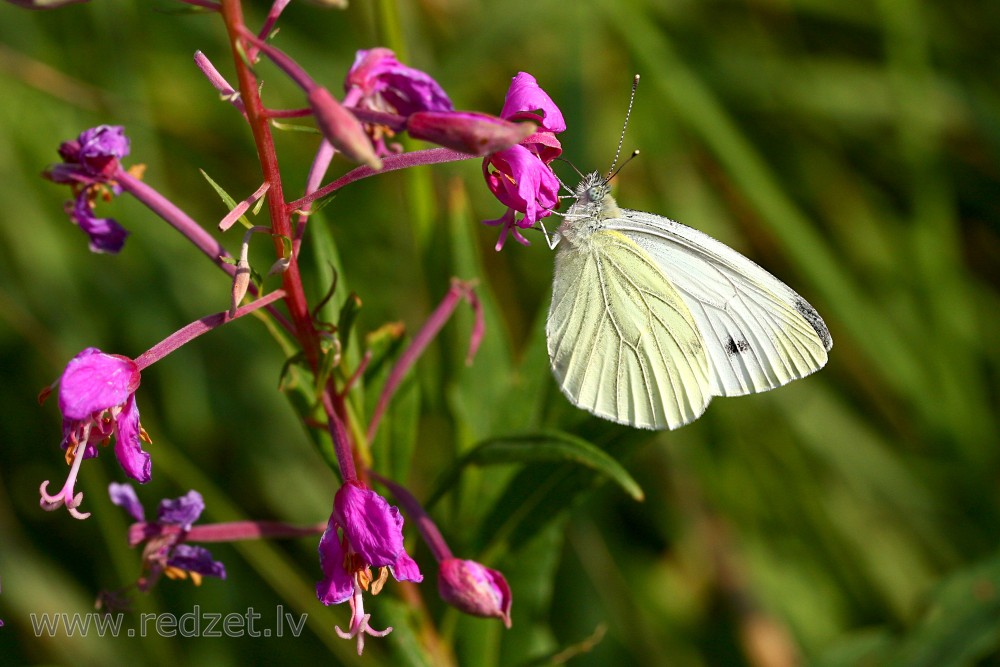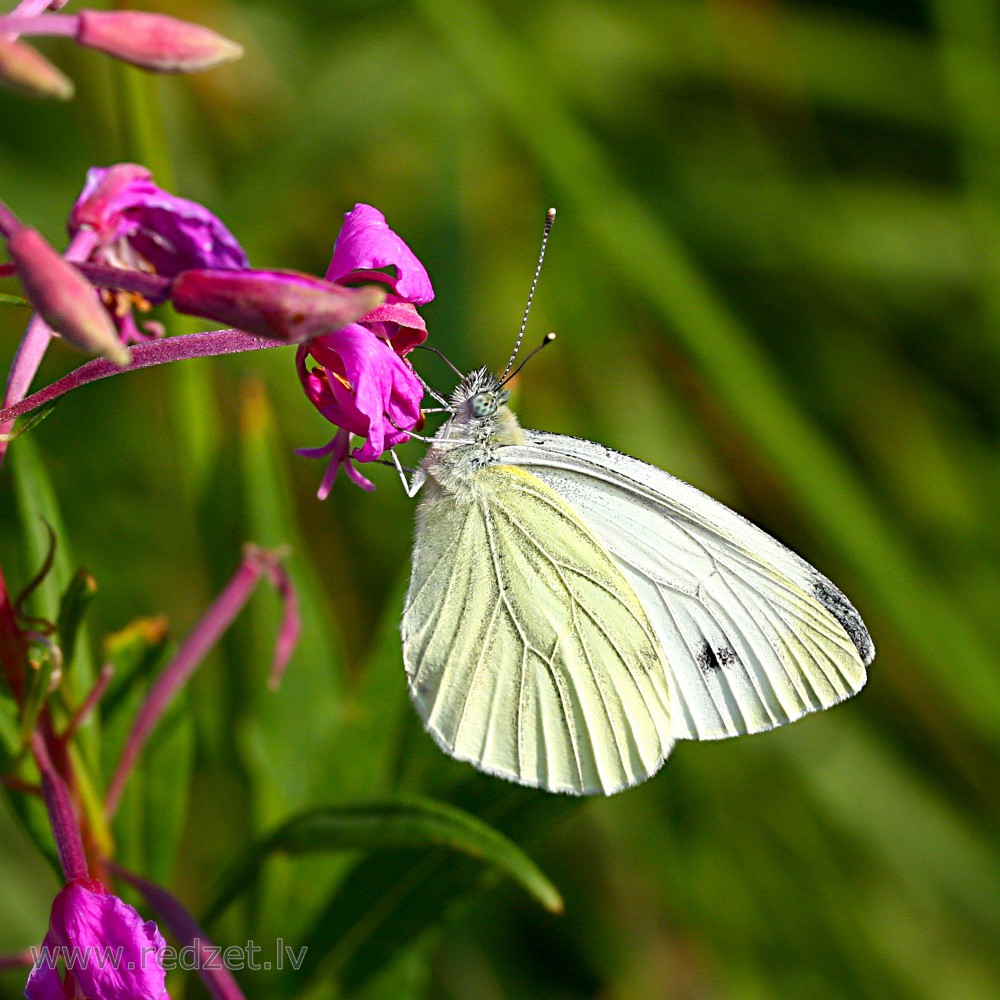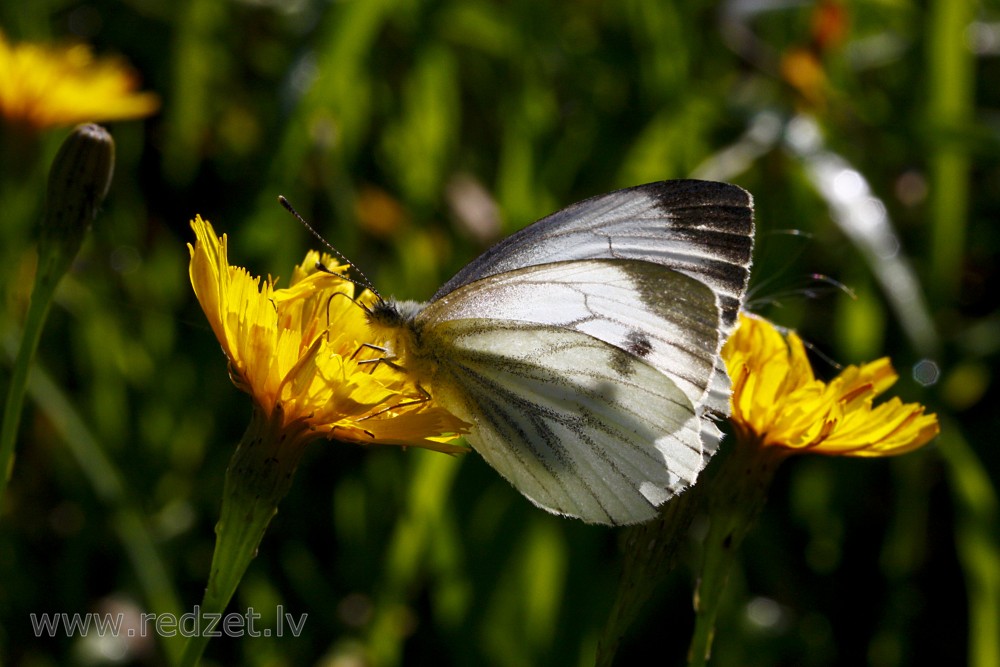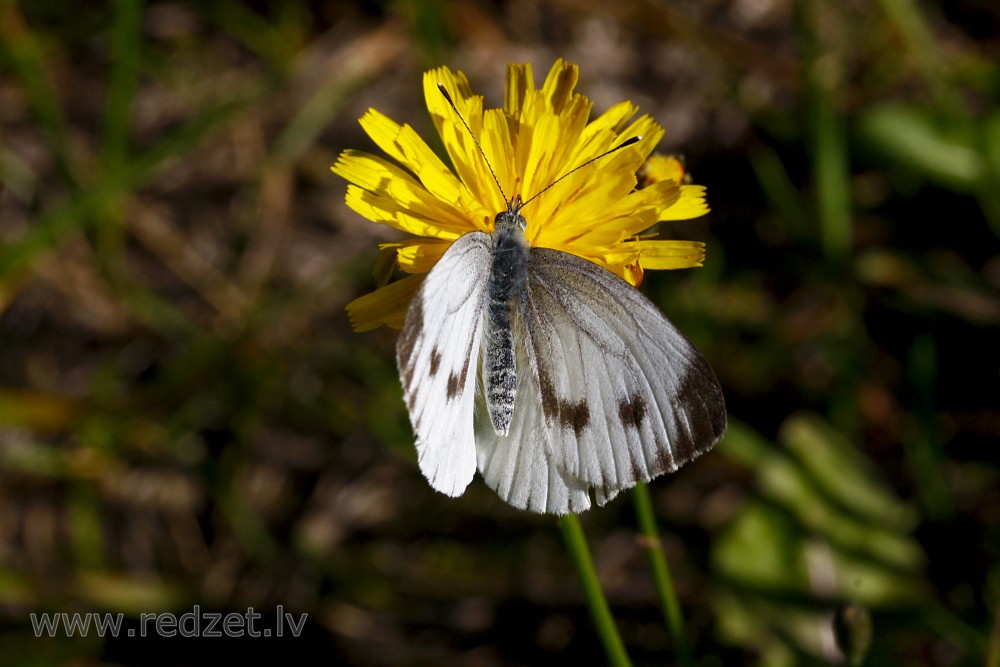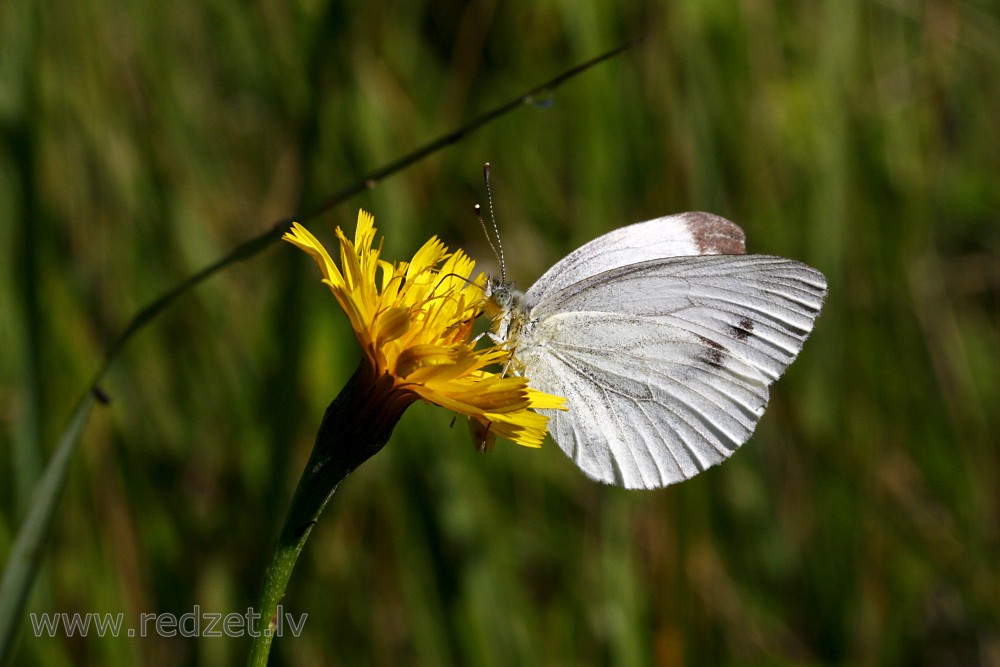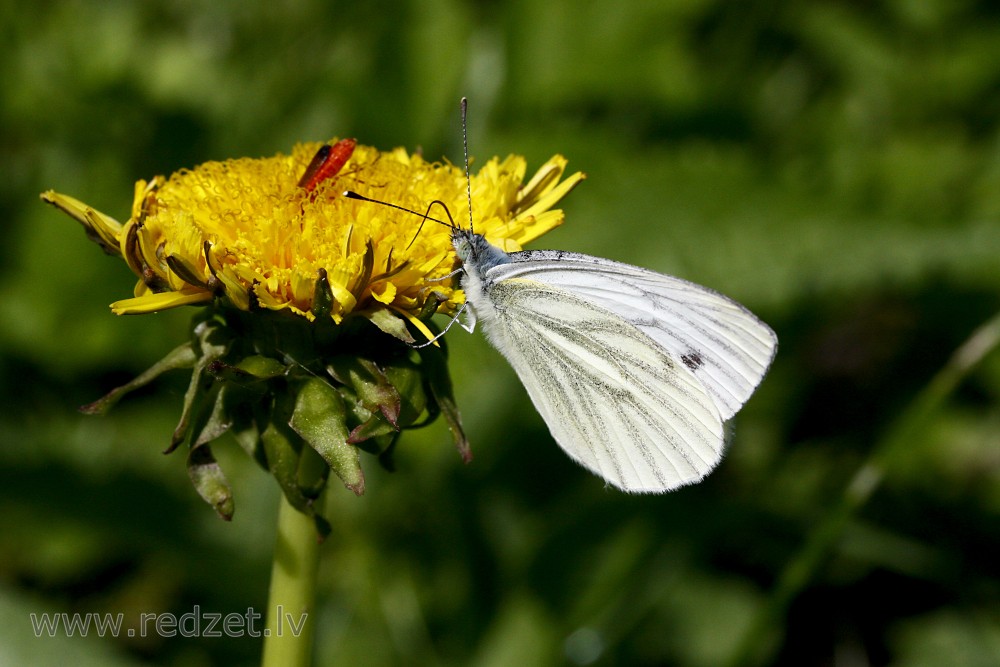Small cabbage white (Pieris rapae)
Pieris rapae, the small white, is a small- to medium-sized butterfly species of the whites-and-yellows family Pieridae. It is also known as the small cabbage white and in New Zealand, simply as white butterfly. The names "cabbage butterfly" and "cabbage white" can also refer to the large white. The butterfly can be distinguished by the white color with small black dots on its wings. They are further distinguished by the smaller size and lack of the black band at the tip of their forewings.
It is widespread and is believed to have originated in Europe or Asia. It is also found in North Africa and has been accidentally introduced to North America, Bermuda, Australia and New Zealand. The caterpillar of this species is seen as a pest for commercial agriculture. Often referred to as the "imported cabbageworm" they are a serious pest to cabbage and other mustard family crops.
Description
In appearance it looks like a smaller version of the large white (Pieris brassicae). The upperside is creamy white with black tips on the forewings. Females also have two black spots in the center of the forewings. Its underwings are yellowish with black speckles. It is sometimes mistaken for a moth due to its plain appearance. The wingspan of adults is roughly 32–47 mm (1.3–1.9 in).
Distribution and habitat
The species has a natural range across Europe, Asia, and North Africa. It was accidentally introduced to Quebec, Canada around 1860 and spread rapidly throughout North America. The species has spread to all of North American life zones from Lower Austral/Lower Sonoran to Canada. Estimates show that a single female of this species might be the progenitor in a few generations of millions. It is absent or scarce in desert and semidesert regions (except for irrigated areas). It is not found north of Canadian life zone, nor on Channel Islands off the coast of southern California. By 1898, the small white had spread to Hawaii; by 1929, it had reached New Zealand and the area around Melbourne, Australia and found its way to Perth as early as 1943. Surprisingly, it does not seem to have made it to South America.
In Britain, it has two flight periods, April–May and July–August, but is continuously-brooded in North America, being one of the first butterflies to emerge from the chrysalis in the spring and flying until hard freeze in the fall.
The species can be found in any open area with diverse plant association. It can be seen usually in towns, but also in natural habitats, mostly in valley bottoms. Although an affinity towards open areas is shown, the small white is found to have entered even small forest clearings in recent years.
The nominate subspecies P. r. rapae is found in Europe, while Asian populations are placed in the subspecies P. r. crucivora. Other subspecies include atomaria, eumorpha, leucosoma, mauretanica, napi, novangliae, and orientalis. It is also very similar to the species Pieris oleracea.
Life cycle
The small white will readily lay eggs on both cultivated and wild members of the cabbage family, such as Charlock (Sinapis arvensis) and Hedge mustard(Sisymbrium officinale). P. rapae is known to lay eggs singularly on the host plant. The egg is characterized by a yellowish color and 12 longitudinal ridges.The egg production peaks about a week after adulthood in lab and the female can live up to 3 weeks. Females tend to lay fewer eggs on plants in clumps than on isolated plants. It has been suggested that isothiocyanate compounds in the family Brassicaceae may have been evolved to reduce herbivory by caterpillars of the small white. However, this suggestion is not generally accepted because the small white has later been shown to be immune to the isothiocyanate forming reaction due to a specific biochemical adaptation. In contrast, the small white and relatives seem to have evolved as a consequence of this biochemical adaptation to the isothiocyanate-forming glucosinolates.
The pupa of P. rapae is very similar to that of P. napi. It is brown to mottled-gray or yellowish, matching the background color. It has a large head cone, with a vertical abdomen and flared subdorsal ridge. The two (pupa of P. rapae and P. napi) can be easily distinguished by comparing the proboscis sheath. In P. rapae, the proboscis sheath extends far beyond the antennal sheath while in P. napi, only a very short distance.
Like its close relative the large white, the small white is a strong flyer and the British population is increased by continental immigrants in most years. Adults are diurnal and fly throughout the day, except for early morning and evening. Although there is occasional activity during the later part of the night, it ceases as dawn breaks. Adult P. rapae can move many kilometers in individual flights. Adults have been observed to fly as much as 12 km in one flight. On average, a female flies about 0.7 km per day and moves 0.45 km from where she starts. Males patrol all day around host plants to mate with females.
en.wikipedia.org
https://en.wikipedia.org/wiki/Pieris_rapae
Continue reading